Working at the factory was not all rules and regulations and the employees did receive some perks. Huntley & Palmers baked a wedding cake for all employees getting married and by 1915 Christmas gifts from the company to the employees ranged from half a crown to £1. The firm also provided a funeral for every employee dying in service.

Not only were employees paid an extra day's wage on George William Palmer's 21st Birthday, but the entire workforce was invited to the Palmer's home for the party.(REDMG : 1997.82.327)
Royal occasions
Since 1884 Huntley & Palmers had been granted the Royal Warrant and Royal visits to the factory were a cause of celebration for the employees. On the occasion of Queen Victoria’s jubilee in 1897 every employee was presented with a day’s pay. When King George V visited in 1918 the employees received a weeks pay as a bonus. This was repeated when the Prince of Wales visited in 1926.
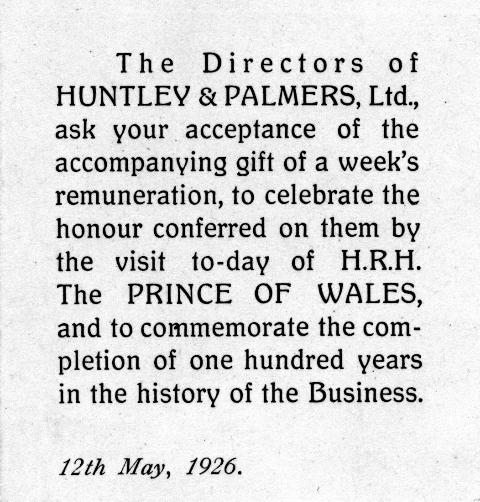
This small card would have been placed inside the employee's wage packet on the week of the Prince of Wales' visit. (REDMG : 1997.82.49)
Long service
Long service of 50 years or more was not uncommon. The first employee taken on by the Huntleys in the 1830s stayed with the firm despite the meagre wages and by 1864 was the Foreman of the Kings Road factory. Men who had completed 50 years service and women who had completed 40 years service received long-service gifts.
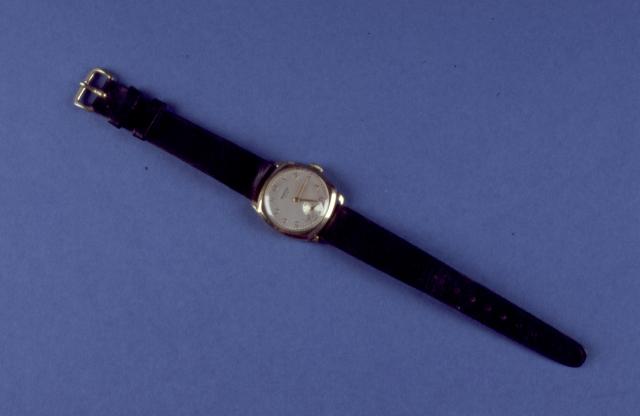
This wristwatch was presented to Mr Harry Hammond for 50 years service at Huntley & Palmers, from 1909 to 1959. His presentation was featured in the staff magazine 'First name News'.(REDMG : 2002.43.1)
Pensions and retirement
It was also regular practice within the factory that when a deserving employee became 'past his job' he was offered light work at a reduced wage. Employees who had completed over 50 years service received a non-contributory pension. By the early twentieth century a pension fund had been set up but only men were allowed to join - this was still the case in 1957.
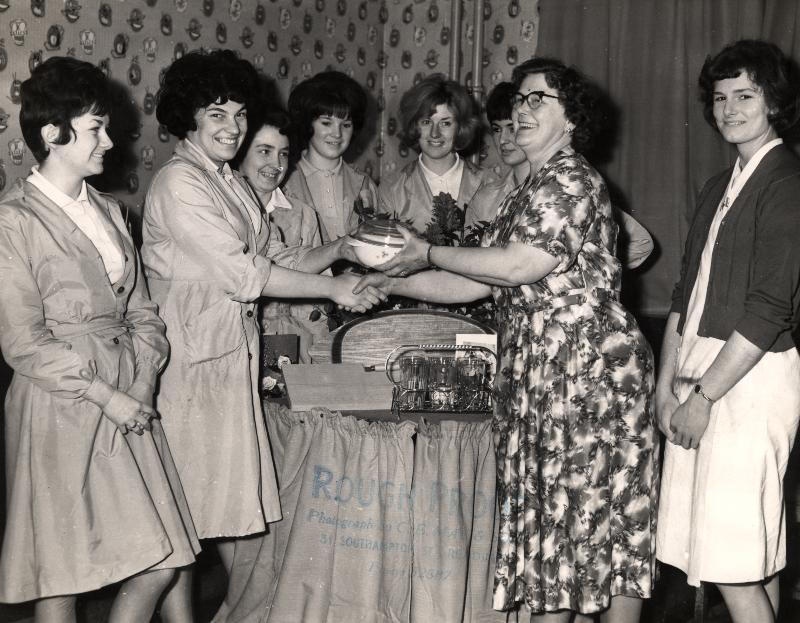
This retirement presentation took place in the Recreation Club in the 1960s. The woman on the right is being presented with casserole dishes as a leaving gift. (REDMG : 1997.130.661)
Recreation in the early days
From 1846 to the early 1850s the partners had provided factory suppers for the workers and in 1854 some of the employees requested a library and reading room. The Mutual Improvement Society was started and all employees over 16 could use the library on payment of 1d per week. Weekly lectures were also organised during the winter months. From 1855 Saturday evening entertainments were held to keep people out of the public houses.
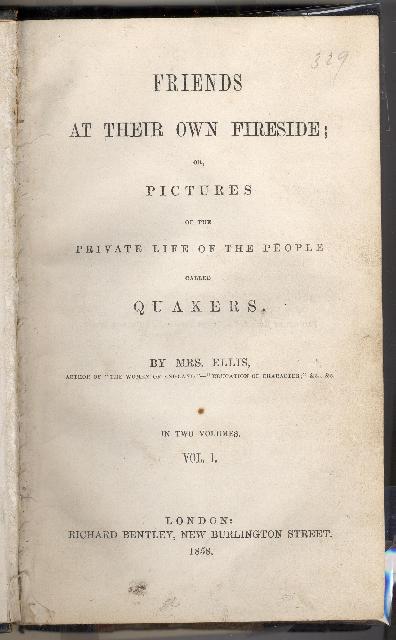
This book about the Quakers, or members of the Society of Friends, originally came from the factory library. There is even a borrowers' notice in the front cover, which warns of the financial penalties for damage or late return! (REDMG : 1981.30.1)
Excursions
Huntley & Palmers started pleasure boat trips on the Thames in July 1855 when about 200 employees and their families travelled by river to Park Place, near Henley. In 1857 the firms first outing was organised when the employees went by special train to Crystal Palace. From then on every alternate year an excursion took place.
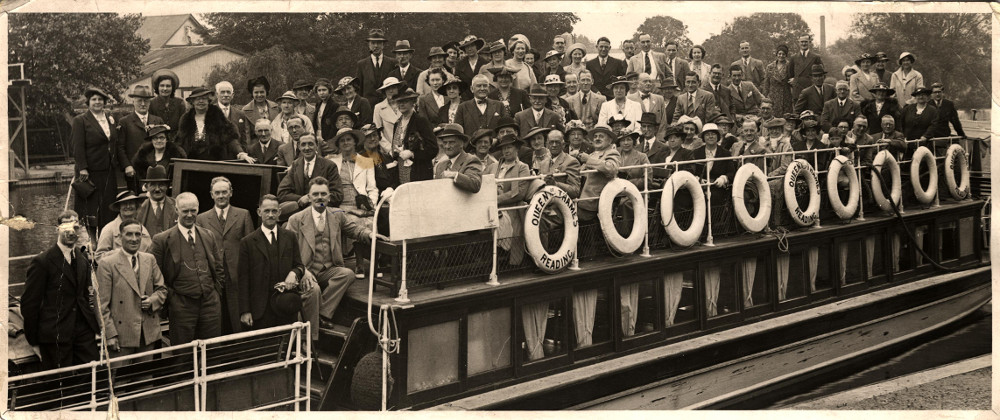
Although large-scale outings ended after 1919 when statutory holidays were introduced, smaller departmental trips like the one shown here in the 1930s continued. (REDMG : 1997.130.445)
By 1868 the sheer number of 3,000 employees made factory excursions impossible and the employees then organised their own excursion fund. Only those who paid 1d a week could go and the destination was decided by ballot every year. From 1872 the firm provided one day's paid holiday for the annual excursion.
In 1914 the final trip took place on 22 June. At this point over 5,000 people were employed in the factory and the outing was important enough to close all the local primary schools for the day so the children could accompany their parents. Trips ceased with the First World War and were never resumed as statutory holidays were introduced in 1919.
The Recreation Club
The firm’s first cricket match was held in 1855 and from then on regular fixtures were organised every summer. It was not until 1898, after the firm had become a limited company, that an organised Recreation Club was established and in January 1899 the directors held a smoking concert to celebrate the opening of the new club.
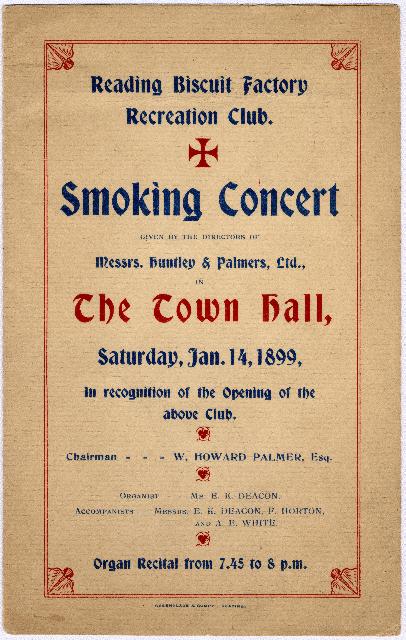
Smoking concerts were live music performances at which smoking and informal discussion during the performance was permitted. Generally, only men were allowed to attend. (REDMG : 1997.82.29)
In 1899 just under a third of the workforce were members of the Recreation Club and the company provided equipment for four cricket elevens, a football team, hockey, quoits, bowls, tennis and athletics as well as a horticultural show. The membership of the club remained strong throughout the first half of the twentieth century although some of the activities changed over time. Choral and dramatic entertainments became very popular with the employees after the First World War.
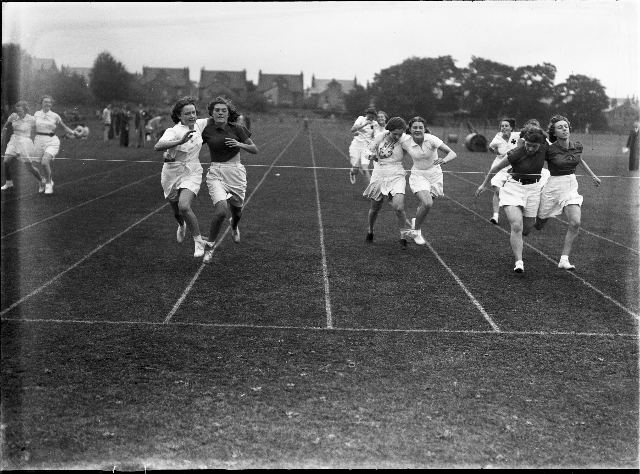
A well-contested three-legged race at the Huntley & Palmers Annual Gala at Kensington Road recreation ground. As well as the usual sports, shows included vegetables, pigeons, dogs, babies and needlework. (REDMG : 1980.36.A279.2)
The Recreation Club after World War II
By the early 1960s all the Recreation Club’s sports facilities at Reading, apart from some football pitches, were concentrated in the Kensington Road ground. The directors contributed half the expense of constructing a new pavilion and bowling green. The membership remained at over 200 despite the fall in employee numbers.
Learn more about the demise of the first generation at Huntley & Palmers in the next section.
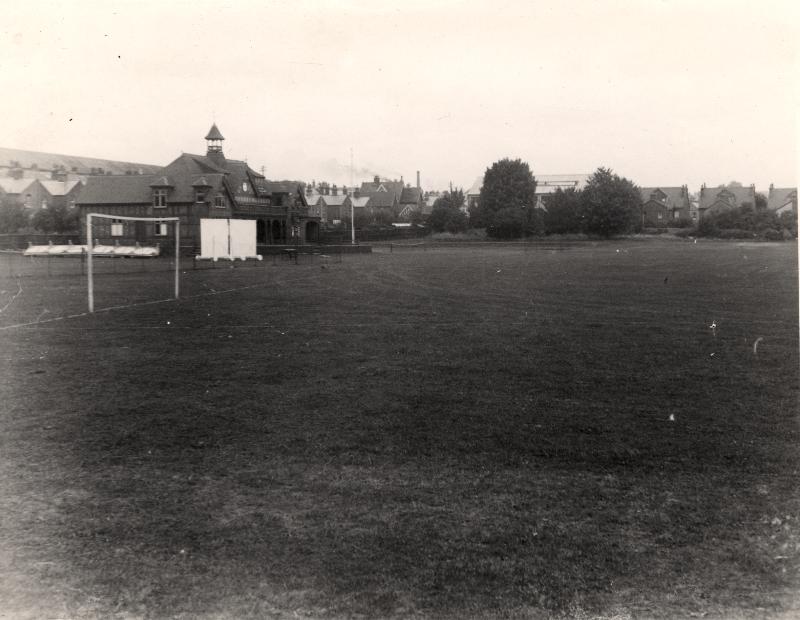
The Huntley & Palmers cricket pitch at Kensington Road was kept in county cricket condition throughout the twentieth century. The grand pavilion sits at the Norfolk Road end of the ground, with an Elm Park terrace visible behind. (REDMG : 1997.130.407)





